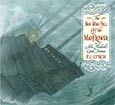|
|
|
|
|
|
 |
Mayflower II – In 1957, England built a remarkable replica of the Mayflower ship and sailed it to Plymouth. Walking onto the Mayflower II is to feel the rocking of the boat under your feet and the wind in the sails. Go down to the lower deck where 102 people were squished into this small space for more than two months on the voyage. Kids can climb into the bunks (try getting your whole family in the bunk) or hold the whipstaff used for steering the ship. People in costume on the ship will answer questions about the passengers and crew of the Mayflower. |
|
|
|
|
| |
|
 |
Plymouth Rock - No one is exactly sure there the Pilgrims landed at Plymouth Harbor, but according to local history, when the Pilgrims set foot on dry land, they stepped out on this granite rock. Enclosed in a fancy stone pavilion, the rock is engraved with the date 1620. |
|
|
|
|
| |
|
 |
Leyden St. – Take a stroll up Leyden St. toward Burial Hill, the site of the original Plymouth settlement. The first fort (that is re-created at the Plimoth Plantation) was at the top of the hill, and Pilgrims are buried in the cemetery, but none of their original headstones remain. Each Friday in August, people dressed Pilgrims walk up Leyden St., knocking on doors that represent the houses of the original Pilgrims. |
|
|
|
|
|
|
 |
Town Brook walking path – One reason the Pilgrims settled at Plymouth was a good source of water, the Town Brook. Today, it’s a lovely spot to walk, starting at Brewster Gardens on Water St., following nice wide paths (okay for a stroller) along the creek. Walk all the way up to Jenny Grist Mill, a re-creation of the first grist mill with working waterwheel. At the Grist Mill, have an ice cream at the Mill Stone Creamery. |
|
|
|
|
| |
|
 |
Historic Houses – |
|
|
|
|
|
|
|
 Howland House – This house was built in 1667 by Jabez Howland, John Howland’s son. John and Elizabeth Howland spent their winters at this home. John Howland died in 1672 at this home, at age 80, and was one of the last surviving Pilgrims. Howland House – This house was built in 1667 by Jabez Howland, John Howland’s son. John and Elizabeth Howland spent their winters at this home. John Howland died in 1672 at this home, at age 80, and was one of the last surviving Pilgrims. |
|
|
|
| |
|
Take a guided tour of the house, where you can see the original 17th century wattle and daub wall and stones in the entryway. In the great room, where the family gathered, there's big hearth and low chair where the mother would have sat most of the day cooking, as well as a fold-down bed (space was at a premium). |
|
|
|
|
| |
|
|
 Richard Sparrow House – This is the oldest house in Plymouth, built in 1640 by Richard Sparrow. There are tours of the house, open every day except Wednesday. (This house is right close to the Grist Mill, so stop off after you’ve had an ice cream.) Richard Sparrow House – This is the oldest house in Plymouth, built in 1640 by Richard Sparrow. There are tours of the house, open every day except Wednesday. (This house is right close to the Grist Mill, so stop off after you’ve had an ice cream.) |
|
|
|
|
| |
|
 |
Picnics – Bring your lunch or grab food to go, and have a picnic on the grassy areas. There are benches and picnic tables all along the harbor, from Plymouth Rock to the breakwater. |
|
|
|
|
 |
 |
|
|
|
|
|
|
|
|
| |
|
|
 |
|
Discover what life was like for 102 passengers on board the Mayflower, and story of first year in America. Passengers included pilgrims, servants, orphaned children, crew, and animals, the journey was difficult, living conditions were hard (cold food, seasick passengers). Upon arriving, pilgrims had to find food and build shelter for a severe winter. Excellent illustrations, diagram of the ship, maps (where did they land exactly), timeline. (Picture book)
|
|
|
|
|
|
| |
|
|
|
Sail to America with Hope and Theodore on the Mayflower, exploring the ship, waiting out a powerful storm, landing in November 1620. Plus fun facts – journal of the journey, food to eat, cannons for protection, tools for navigation, animals on board, baby born on the ship. (Picture book)
|
|
|
|
|
|
|
|
|
|
|
|
|
|
|
|
| |
|
|
 |
|
Beautifully illustrated story of John Howland's voyage to America, and survival in difficult times. Howland leaves his family in England, sails on the Mayflower, falls overboard, but is saved. The first winter is hard, and when Carver dies Howland is now a free man. A year later, a ship arrives from England - will Howland stay in America? (Picture book)
|
|
|
|
|
|
| |
|
|
|
Fascinating re-creation of the voyage of the Mayflower – the passengers arrive on board (there were about 30 children), provisions are loaded, storms and rough conditions at sea, charting a course, landfall at Plymouth. Illustrated with photographs from the Mayflower II. (Chapter book)
|
|
|
|
|
|
|
|










